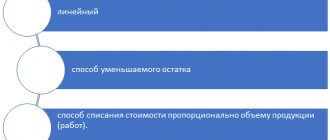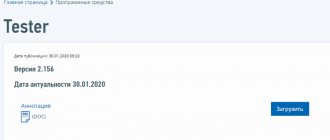Concept and types of special tax regimes
A special tax regime (STR) is a type of taxation that has distinctive characteristics from those generally established in the Tax Code of the Russian Federation, with the exception of section 8.1, which sets out the rules governing the STR.
Among the special tax regimes, five regimes are distinguished:
- USN . A simplified tax payment system or the so-called “simplified” system, which is usually used when doing business. It includes a large number of payments that are part of health and pension insurance. This system is not compulsory, and involves two forms introduced in 2014. According to the simplified tax system, tax rates on income are 6%. However, if this is income paid to the state and reduced by the amount of expenses, the rate is 15%.
- UTII . This type of tax regime is also called “imputation”. Unified taxes on imputed income have also become non-compulsory since 2021. Such a system is usually used in conjunction with the main taxation system. It is intended for special types of activities, including veterinary services, motor transport and real estate businesses, advertising, etc.
- Unified agricultural tax . A taxation system regulating agriculture, which helps in the work of agricultural producers. It is applied instead of income tax, property tax and VAT. From 2021, the rate has risen from 18% to 24%.
- PSN . This is a patent system introduced to regulate patent activity. It can be used only by those individual entrepreneurs who are engaged in special types of activities indicated on the websites of the tax services of the constituent entities of the Russian Federation. This system replaces VAT, personal property tax, and personal income tax. The rate is 6%.
- PSA . This system is rarely used and is relevant only when paying taxes during the implementation of a goods division agreement. Such legal relations are possible when foreign and national enterprises are engaged in the extraction of mineral raw materials. The rate is calculated individually.
Which chapters of the Tax Code of the Russian Federation regulate special tax regimes, by whom they can be applied and on what grounds, it is proposed to find out from the table that can be found.
Knowing about special tax regimes is mandatory not only for an economist or accountant, but also for a businessman, since this is important for competent management of his business and optimization of work with funds within the enterprise.
Assessing the feasibility of issuing invoices
According to the author, issuing invoices by persons who are not taxpayers, especially by persons using the simplified tax system, is impractical and economically unprofitable for both the seller and the buyer.
Let us illustrate the author’s position with an example.
Example
LLC "Vector", which applies a simplified taxation system, at the request of the buyer, issued an invoice for the sale of goods in the amount of 1,180,000 rubles. (including VAT - 180,000 rub.)
The above example clearly demonstrates (see table) that the amount of overpaid tax in the case of applying the object of taxation is income is 10,800 rubles, and when applying the object of taxation - income reduced by the amount of expenses - 27,000 rubles. Thus, the seller’s benefit when selling goods (works, services) without VAT is obvious.
Table
| When issuing an invoice with VAT, rub. | When sold without VAT, rub. | |
| Amount of income from the sale of goods | 1 180 000 | 1 000 000 |
| Date of funds transfer | January 15, 2006 | January 15, 2006 |
| Cost of purchasing the goods | 800 000 | 800 000 |
| VAT amount | 180 000 | 0 |
| Amount of single tax to be paid: | ||
| - with the object of taxation being “income”* | 70 800(1 180 000 * 6 %) | 60 000 (1 000 000 * 6 %) |
| - for the object of taxation, income reduced by the amount of expenses 57,000 | 57 000 (380 000 * 15 %) | 30 000 (200 000 * 15 %) |
From the buyer’s perspective, first of all, it should be noted that when purchasing goods (work, services) from persons who are not taxpayers and the latter issue invoices highlighting VAT amounts, buyers have the right to deduct the VAT amounts indicated in the invoices. invoices. This position is confirmed by the Resolution of the Federal Antimonopoly Service of the North-West District dated August 30, 2005 in case No. A05-2898/2005-13.
However, when purchasing goods (works, services) without VAT, buyers have a certain benefit, which is expressed in the possibility of paying VAT at a later date.
The buyer paid for the purchased goods, including the amount of VAT, transferred on January 15, 2006.
In the case of purchasing this product without VAT, the amount of VAT subject to deduction on the VAT tax return is missing, therefore, the full amount of VAT, calculated on the basis of income from the sale of the product, is subject to payment to the budget at the end of the tax period, i.e. either until February 20, 2006 (tax period - month), or until April 20, 2006 (tax period - quarter).
Thus, during the month (quarter) cash in the amount of 180,000 rubles. remain in the use of the organization - the buyer, and, as everyone knows, the withdrawal of funds from circulation reduces the income (profit) received by the business entity.
General characteristics of SNR
Special tax regimes are a special set of rules established separately for certain social groups, types of activities, etc. Among the main characteristics of special tax regimes are the following:
- With the exception of the SPR, all types of special regimes can only be used by representatives of small businesses.
- ONS, UTII and Unified Agricultural Tax can be used by enterprises and individual entrepreneurs, and PSA - exclusively by enterprises, PSN - exclusively by individual entrepreneurs.
- All special regimes (except for the simplified tax system) can only be used for certain objects that are specified in the Tax Code of the Russian Federation or established by local authorities. The simplified tax system is used by large business representatives under the conditions prescribed in Chapter 26.2 of the Tax Code.
- In all systems (except PSA), a single special tax is paid instead of income tax, property tax and VAT. As for the PSA, in this case a certain preferential system and a special tax will apply.
The tax period is determined depending on the specific system. Thus, the declaration for taxes of the Unified Agricultural Tax and the National Tax Service is submitted once a year, for the UTII - per quarter, for the PSN - per year or during the validity of the payment, PSA - depending on the period of each tax. These and other characteristics can be found in the table by downloading here.
General taxation regime (OSNO)
Individual entrepreneurs use this regime very rarely - only in exceptional cases. There are two main reasons:
- On OSNO, you, as an individual entrepreneur, will transfer to the budget 13% of personal income tax, VAT in the form of 20% or 10%, plus property tax. It turns out that the amount of all taxes payable turns out to be quite large, and if you applied one of the simplified regimes, you would pay the state much less.
- At OSNO you will have to keep full records and provide reporting, including a book of income and expenses, and declaration of VAT and personal income tax. This means you'll have to hire an accountant, hire a consulting firm to handle your accounting, or do it all yourself.
What will you get in the end?
In addition to the large amount of taxes, there are also additional expenses, because the accountant needs to be paid a salary, and the consulting firm will bill you for its services! Things will get even more complicated if you decide to do the accounting yourself. You will have to take at least accounting courses, otherwise all your mistakes will result in fines from the tax office.
But there are also individual entrepreneurs who choose the general mode.
Their decision is usually dictated by the operating conditions. Basically, you just have to stay at OSNO so as not to lose large counterparties who are recognized as VAT payers and want to deduct input VAT when purchasing goods or paying for services and work from individual entrepreneurs. A large company will easily find a replacement for you - another supplier who pays VAT. But you may never find a replacement. If the volume of turnover between the counterparty and the individual entrepreneur is quite large, then the entrepreneur in such a situation simply has no choice: either he uses OSNO, or loses the counterparty and his income along with him.
Another reason for choosing OSNO for an individual entrepreneur is the restrictions due to which he cannot apply special regimes (amount of revenue, number of employees, type of activity).
Result: an individual entrepreneur on OSNO pays several taxes, adding up to a decent amount; bears the costs of maintaining records; has the risk of penalties for violation of deadlines for paying taxes and filing reports if records are kept by an incompetent employee.
Conditions for applying special tax regimes
What conditions exist and apply today for the most popular special tax regimes, we will consider below:
Unified agricultural tax
This is a single tax on agriculture. Here are special requirements for the income of the enterprise:
- The share of income from the sale of agricultural products should be no less than 70% of total revenue. At the same time, there are no limits in terms of revenue - they can be absolutely anything.
- If the company is engaged in fishing and production of fish, then the number of employees should be no more than 300 people.
simplified tax system
“Simplified” can be used subject to the following conditions:
- The company should not be a state-owned or budgetary institution, nor an insurer, pawnshop or investment fund.
- The authorized capital may contain no more than 25% participation of third-party organizations or enterprises.
- The company cannot engage in gambling or mining.
- The annual number of employees cannot exceed 100 people.
- For 9 months of the year preceding the year the simplified tax system was established, the enterprise’s income was not higher than 45 million. This figure is calculated taking into account VAT and inflation.
UTII
It can be used as an independent tax regime, or as an additional one, for example, in combination with the simplified tax system. To switch to UTII, a company does not need to limit itself in any way in terms of revenue, but it is worth adopting the following rules:
- If a company is engaged in sales in an area specially available for this purpose, then this area should not exceed 150 square meters.
- The number of employees of the enterprise for the current and last year cannot be more than 100 people.
- The types of activities for which UTII is applicable are clearly reflected in paragraph 2 of Article 346.26 of Article of the Tax Code of the Russian Federation.
When switching to a certain tax regime, it is necessary to take into account both federal and regional features of the transition. To clarify these features, you will need to contact your local Tax Service.
Calculation of single tax
The next problem that needs to be solved by an accountant of an organization or individual entrepreneur applying the simplified tax system when selling goods (work, services) inclusive of VAT is how to determine the amount of income subject to taxation, with or without taking into account the amounts of VAT received from the buyer and paid in budget.
According to paragraph 1 of Article 346.15 of the Tax Code of the Russian Federation, taxpayers applying the simplified taxation system when determining the object of taxation take into account income from sales, determined in accordance with Article 249 of the Tax Code of the Russian Federation, and non-operating income, determined in accordance with Article 250 of the Tax Code of the Russian Federation. When determining the object of taxation, income provided for in Article 251 of the Tax Code of the Russian Federation is not taken into account. The list of income given in this article is exhaustive and does not provide for the possibility of excluding VAT amounts received from buyers from income subject to taxation. Consequently, the full amount of revenue (advance) received from buyers (customers) should be taken into account as part of income. Thus, taxpayers who have chosen income as the object of taxation will calculate and pay a single tax, both on the amount of directly received income (without VAT) and on the amount of value added tax subject to transfer (paid) to the budget.
Taxpayers who have chosen the object of taxation as income reduced by the amount of expenses will try to find an answer to the question: “Can the calculated and paid amount of VAT be taken into account in expenses?”
The position of the Russian Ministry of Finance on this issue is set out in letters dated April 16, 2004 No. 04-03-11/61 and dated May 11, 2004 No. 04-03-11/71:
A similar position was expressed in the letter of the Ministry of Finance of Russia dated October 29, 2004 No. 03-03-02-04/1/41:
|
SNR among small businesses
The Tax Code provides special opportunities for small businesses. In this case, one important tax regime is noted - a simplified taxation system or “simplified”. It can be used by both organizations and individual enterprises. The advantages of such a system are as follows:
- For organizations . Taxation on the profit of an organization becomes unified and is no longer calculated in accordance with Chapter 25 of the Tax Code of the Russian Federation. In the case of VAT, the tax will not be calculated according to Chapter 30 of the Tax Code of the Russian Federation. These taxes are replaced by a single one, that is, the accountant will have to make calculations only for a single tax regulated by the “simplified tax”.
- For individual entrepreneurs . In this case, the income tax of an individual will not be calculated in accordance with Chapter 23 of the Tax Code, and the property tax will not be calculated either. Both of them are replaced by a single tax levy introduced by simplified taxation.
Note that the single tax introduced by the simplified system is not all the fees that will need to be paid in favor of the state. You will also need to pay insurance premiums to the Pension Fund; water taxes; government fees; taxes on personal income; transport and land taxes; mineral taxes.
Please note that not all enterprises and individual entrepreneurs can take advantage of the simplified tax regime - for this you must meet certain criteria. These criteria are enshrined in Chapter 26.2 of the Tax Code of the Russian Federation.




